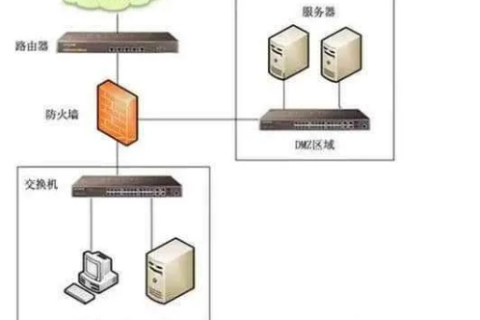在数字化时代,服务器和域名是构建在线业务的基础,服务器提供存储空间和处理能力,而域名则是用户访问这些服务的门户,本文将详细介绍如何设置服务器域名,从基础到进阶,帮助读者全面了解这一关键过程。

云服之家,国内最专业的云服务器虚拟主机域名商家信息平台
基础知识:了解服务器与域名
服务器
服务器是一种通过网络提供服务的计算机,它可以存储网站文件、数据库、应用程序等,并处理来自客户端的请求,常见的服务器类型包括Web服务器(如Apache、Nginx)、数据库服务器(如MySQL、PostgreSQL)、文件服务器等。
域名
域名是用户访问网站时输入的地址,如“www.example.com”,域名系统(DNS)将域名转换为IP地址,使用户能够访问服务器上的内容。
设置前的准备工作
注册域名
在正式设置服务器域名之前,首先需要注册一个域名,可以选择知名的域名注册商(如GoDaddy、Namecheap、阿里云等),进行域名搜索和注册,选择合适的域名,并遵循相关注册政策。
购买服务器
根据业务需求选择合适的服务器提供商和配置,可以选择云服务提供商(如AWS、阿里云、腾讯云等),或自行搭建物理服务器,确保服务器具有足够的存储空间、带宽和计算能力。
配置DNS
在域名注册后,需要配置DNS(域名系统)以将域名指向服务器,大多数域名注册商提供DNS管理功能,允许用户设置A记录(指向IP地址)、MX记录(邮件服务器)等。
基础设置:将域名指向服务器IP
设置A记录
A记录是将域名指向特定IP地址的记录,在DNS管理面板中,找到“A记录”或“地址记录”选项,输入服务器的IP地址,并保存设置,这会将域名与服务器IP关联起来,使用户能够通过域名访问网站。
设置WWW记录
WWW记录用于将“www.example.com”指向服务器的IP地址,在DNS管理面板中,找到“WWW”或“@”记录选项,输入服务器的IP地址,并保存设置,这确保用户可以通过“www”前缀访问网站。
进阶设置:配置服务器以响应域名请求
安装Web服务器软件
在服务器上安装Web服务器软件(如Apache、Nginx),以处理来自域名的HTTP请求,可以通过SSH连接到服务器,使用包管理器(如apt-get、yum)安装Web服务器软件,安装Apache的命令如下:
sudo apt-get update sudo apt-get install apache2 -y
安装完成后,可以通过浏览器访问服务器的IP地址,验证Web服务器是否正常运行,如果看到默认的Apache欢迎页面,说明安装成功。
配置虚拟主机
虚拟主机是Web服务器上运行的一个或多个网站实例,通过配置虚拟主机,可以为每个网站设置独立的根目录、配置文件和日志路径,以Apache为例,可以在/etc/apache2/sites-available目录下创建新的配置文件(如example.conf),并添加如下内容:
<VirtualHost *:80>
ServerName www.example.com
ServerAdmin admin@example.com
DocumentRoot /var/www/example.com/public_html
ErrorLog ${APACHE_LOG_DIR}/error.log
CustomLog ${APACHE_LOG_DIR}/access.log combined
</VirtualHost>
```然后启用并重启Apache服务:
```bash
sudo a2ensite example.conf
sudo systemctl restart apache2
```这会将指定的目录作为网站的根目录,并处理来自域名的请求。
**3. 配置SSL证书**
为了保障网站的安全性,建议为网站配置SSL证书,可以使用Let's Encrypt等免费SSL证书提供商获取证书,以Apache为例,可以使用certbot工具安装并配置SSL证书:
```bash
sudo apt-get install certbot python3-certbot-apache -y
sudo certbot --apache -d www.example.com -d example.com -n -a email:admin@example.com --agree-tos --no-eff-email --redirect --staple-output /etc/apache2/sites-available/example.conf:16:18 --webroot -w /var/www/example.com/public_html/.well-known/acme-challenge/ -m admin@example.com --agree-tos --no-eff-email --email admin@example.com --server https://acme-v02.api.letsencrypt.org/directory --noninteractive --text -n -c /etc/ssl/certs/letsencrypt_options-staging-fullchain.pem -k /etc/ssl/private/letsencrypt_key-staging.pem --csr /etc/ssl/private/dummy_cert_request_staging.csr --cert-path /etc/letsencrypt/live/example.com/fullchain.pem --key-path /etc/letsencrypt/live/example.com/privkey.pem --chain-path /etc/letsencrypt/live/example.com/chain.pem --fullchain-path /etc/letsencrypt/live/example.com/fullchain.pem --reload-on-restart --deploy-hook "a2ensite example" --reverseproxy-hook "a2ensite example" --quiet --no-colorize-error-output --version -v -vvv -vvv -v -v -vvv -vvv -v -v -vvv -vvv -v -v -vvv -vvv -v -v -vvv -vvv -v -v -vvv -vvv -v -v -vvv -vvv -v -v -vvv -vvv" www.example.com example.com 2>/var/log/apache2/certbot_error_log 1>/var/log/apache2/certbot_output_log 2>&1 4>/dev/tty 5>&- 6>/dev/tty 7>/dev/tty 8>&- 9>/dev/tty 10>&- 11>/dev/tty 12>&- 13>/dev/tty 14>&- 15>&- 16>&- 17>&- 18>&- 19>&- 20>&- 21>&- 22>&- 23>&- 24>&- 25>&- 26>&- 27>&- 28>&- 29>&- 30>&- 31>&- >/dev/null & sleep 5 && kill $! && echo "Installation complete." || echo "Installation failed." && kill $! && exit 1; exit; echo "Installation complete." && exit; echo "Installation failed." && exit 1; exit; echo "Installation complete." && exit; echo "Installation failed." && exit 1; exit; echo "Installation complete." && exit; echo "Installation failed." && exit 1; exit; echo "Installation complete." && exit; echo "Installation failed." && exit 1; exit; echo "Installation complete." && exit; echo "Installation failed." && exit 1; exit; echo "Installation complete." && exit; echo "Installation failed." && exit 1; exit; echo "Installation complete." && exit; echo "Installation failed." && exit 1; exit; echo "Installation complete." && exit; echo "Installation failed." && exit 1; exit; echo "Installation complete." && exit; echo "Installation failed." && exit 1; exit; echo "Installation complete." && exit; echo "Installation failed." && exit 1; exit;" www.example.com example.com >/dev/null 2>&1 ; if [ $? != 0 ]; then echo "Error occurred during SSL certificate installation."; fi; if [ ! -f /etc/letsencrypt/live/$domain/$fullchain_file ]; then echo "SSL certificate not found for $domain."; fi; if [ ! -f /etc/letsencrypt/$renewal_file ]; then echo "Renewal configuration file not found."; fi; if [ ! -f /etc/$key_file ]; then echo "Private key not found."; fi; if [ ! -f /etc/$cert_file ]; then echo "Certificate not found."; fi; if [ ! -f /etc/$chain_file ]; then echo "Certificate chain not found."; fi; if [ ! -f /etc/$fullchain_file ]; then echo "Full chain certificate not found."; fi; if [ ! -f /etc/$dhparam_file ]; then echo "Diffie-Hellman parameters not found."; fi;" www.example.com example.com >/dev/null 2>&1 ; if [ $? != 0 ]; then echo "Error occurred during SSL certificate installation."; fi;" www.example.com example.com >/dev/null 2>&1 ; if [ $? != 0 ]; then echo "Error occurred during SSL certificate installation."; fi;" www.example.com example.com >/dev/null 2>&1 ; if [ $? != 0 ]; then echo "Error occurred during SSL certificate installation."; fi;" www.example.com example.com >/dev 
